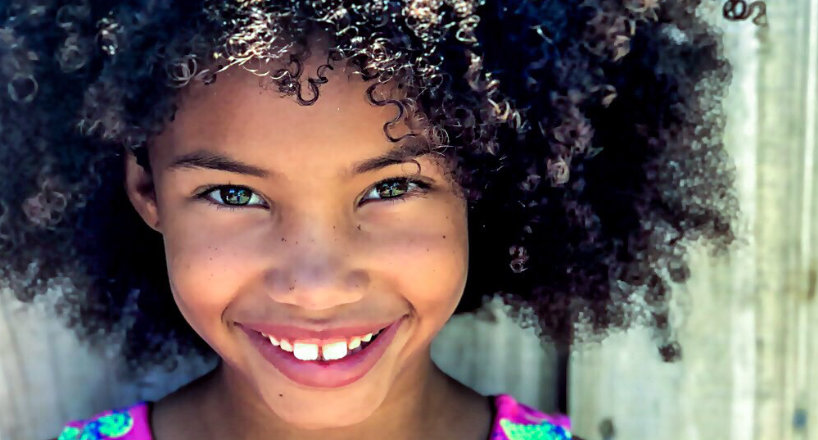Children’s Vision – FAQ’s

Most parents believe that if their child had an eye or vision problem they would know. However, this is far from the truth for a number of reasons. First of all, children often can’t express or don’t realize the difficulty they are having, and often vision problems will be overlooked by the associated behavioral issues that come as a result of frustration. Further, many eye or vision problems don’t show symptoms until they have progressed significantly which often makes the condition harder to treat.
Conditions such as amblyopia (lazy eye) or strabismus (crossed eyes) can be corrected more effectively when they are diagnosed and treated early at a young age. Further, the sooner you diagnose and correct a vision problem, the sooner your child will be able to achieve his or her potential without struggling with these difficulties. This is why it is critical to have your child’s eyes examined by an eye doctor at regular intervals. Here are some FAQs and answers about Children’s Vision that every parent should know:
Q: At what ages should children have their eyes examined?
A: The official suggestions for the American and Canadian Optometric Associations are that infants ought to have their very first eye tests at 6 months. Following that, kids without any known vision issues ought to have another test at 3 years and after that prior to going into kindergarten.
Kids who do not need vision correction or treatment should have a vision examination every year or 2 years and those who utilize vision correction ought to have an annual eye test. Obviously, if your kid is experiencing problems in school or after school activities that may be because of a vision issue schedule an eye exam immediately.
Q: My kid passed a vision screening by the nurse at school. Does he still require an eye exam?
A: Yes. Numerous schools execute a standard vision screening test to evaluate whether the kid sees plainly at a range, however, these tests are limited in scope. They do not evaluate practical vision such as the kid’s ability to focus, track words on a page or the eyes’ capability to operate in tandem. They likewise do not take a look at the health of the eye itself.
These tests are necessary to understand the detailed photo of how healthy the eyes are and how well they are doing their task. In reality, research studies have shown that up to 43% of children with vision issues can pass a vision screening test! A comprehensive eye exam will evaluate all of these functions as well as color vision, depth understanding, and eye coordination.
Q: My kid was diagnosed with strabismus and amblyopia. Can this be dealt with and if so, what are the options?
A: Particularly when detected early, opportunities for a total correction for strabismus and amblyopia are good when dealt with correctly. The optimum age for this to happen is before 8-10 years old. Depending upon the severity of the strabismus (crossed-eye), surgical treatment might be needed to align and correctly line up the crossed eyes. Amblyopia (lazy eye) can then be dealt with by utilizing eyeglasses, eye patching, or vision therapy to strengthen the weak eye and train the eyes to interact.
A medical professional that specializes in pediatric optometry can assess the condition and go over treatment choices on an individual basis.
Q: What is vision therapy?
A: Vision therapy is a doctor-supervised, individualized program of workouts to reinforce the functions of the eye. It is used to remedy problems with eye positioning, focusing, coordination, tracking and more. Vision therapy typically utilizes tools such as specialized lenses or prisms and involves exercises both throughout workplace visits and in the house to strengthen the modifications. The process generally takes about 6 months to see lasting improvement.
Q: My son’s nearsightedness keeps becoming worse– he needs a new prescription every year. Is there a method to stop this?
A: There is a research study that reveals that progressive myopia can be stopped or slowed throughout the childhood years. There are a number of treatments that are used for what is called “myopia control” including multifocal glasses or contact lenses, orthokeratology (ortho-k) or atropine eye drops.
Speak to a pediatric optometry professional to read more about the options and what might work best for your child.
Q: Every morning it is a battle to get my kid to use her glasses. What can I do?
A: It may require time for your child to adapt to the feel of the glasses and to be comfy seeing them. For kids, you can discover glasses that come with integrated headbands that can assist to hold the glasses in place. It helps to be consistent in putting them on to permit the kid to adjust to the feel of the glasses.
Very often, specifically for kids that can’t inform you what is bothering them, the reason for a kid’s refusal to wear glasses is that something is not comfy. It might be that the prescription is not right, that the glasses pinch or that are feeling heavy.
It could be rewarding to take the glasses back to the eye medical professional to guarantee that they are in reality an appropriate fit.
Q: At what age is it acceptable for a kid to wear contact lenses?
A: Contact lenses can be a great benefit, specifically for kids that are active or tend to break or lose their glasses. Nevertheless, they are medical device that needs to be treated with correct care and hygiene. If a kid is not responsible enough to take care of them properly he could wind up with a serious eye infection, a scratched cornea, or even worse. Many specialists agree that the youngest age that contact lenses ought to be thought about would be between 10-12 depending upon the kid’s maturity and tidiness. Talk to your eye doctor about what would be best for your child.